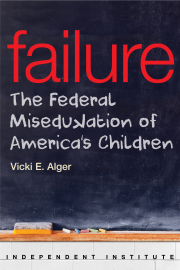Whether Congress enacts a federal elementary and secondary education savings account (ESA) program as part of its tax reform package is anybody’s guess. Yet one thing’s for certain: The states shouldn’t wait for Congress to expand educational options—especially California.
The Golden State is an innovation leader in virtually every area but K-12 education. It largely rations schooling based on where families can afford to live, a practice that’s a relic of a bygone era. Such a system cannot provide the customized learning students need, but states’ K-12 ESA programs are.
Today ESAs are helping more than 11,000 students in four states with operational programs: Arizona, the first state to enact ESAs back in 2011, followed by Florida, Mississippi and Tennessee. Legislation enacting or expanding ESAs has also been introduced in at least 21 states this year alone. The empirical evidence to date shows that ESAs are popular, fiscally responsible, constitutional and they’re easy to use.
Parents simply withdraw their children and sign contracts agreeing not to re-enroll them in public schools while using ESAs. Next the state deposits most or all of the formula funding it would have spent into students’ ESAs instead.
Under most programs parents receive a type of dedicated-use debit card to pay for authorized expenses including private school tuition, online courses, tutoring and special education therapies. Leftover funds remain in the child’s ESA for future education expenses, including college.
ESA funds are typically disbursed quarterly, but only after parents submit expense reports with receipts for independent verification. Regular audits help prevent misspending, and any misused funds must be repaid in full or parents risk legal prosecution.
Many states considering ESAs are opting for private management and/or funding of their programs, much like tax-credit scholarship programs, to reduce reliance on government appropriations and maximize education providers’ freedom to innovate. These states include Arkansas, Missouri, New Hampshire and Wyoming.
California could readily enact this kind of ESA program.
It has nearly 190,000 tax-exempt charitable organizations, along with a well-established regulatory and oversight infrastructure. Individuals and businesses may also claim credits against their state income taxes for charitable donations and expenses related to various business activities. A California tax-credit financed ESA program would work similarly.
Donors who contribute to nonprofit ESA charitable organizations would be allowed to claim dollar-for-dollar credits against their state income taxes. Tax credits would be awarded on a first-come, first-served basis until the allowable aggregate limit was reached.
With any tax credit, the state forgoes upfront revenue to achieve future benefits, such as the provision of social services or promoting economic growth through various business activities.
What sets a California tax-credit financed ESA apart from other such credits is that just a small proportion of students would need to participate for the savings from not educating them at public expense to exceed the upfront revenue loss.
For example, if the allowable annual ESA tax-credit donations were as high as the state’s Expanded Film Credit ($300 million) or even its corporate Research and Development Credit ($1.5 billion), the program would be cost-neutral if just 1 or 2 percent of California K-12 students participated.
Such a program would also put quality education options within reach of more California families than Congress‘ federal ESA proposal, which would make certain K-12 expenses allowable under tax-advantaged college 529 savings plans, including private school tuition.
As promising as this idea may seem, two-thirds of Americans are still unaware of 529 savings plans — even though they’ve been around since the late 1980s. What’s more, less than 3 percent of families use these savings plans, and those who do have higher median incomes.
In contrast, state-led educational choice programs have been proliferating for decades, from just five non-public-school choice programs in the mid-1990s to 64 programs today. The vast majority of these programs are designed specifically for students from low- and middle-income families, many of whom don’t have additional income to devote to savings and need education options now.
Today, state educational choice programs are helping students with disabilities, those who would otherwise be trapped in failing public schools, students from the foster-care system, military dependents, students whose parents were killed in the line of duty, and students residing on Indian Reservations.
Regardless of what Congress does or doesn’t do—California’s public education system is broken. It costs taxpayers nearly $66 billion annually. Yet student math and reading achievement places California among the bottom five states nationally.
The country’s most populous state should be an education innovation leader, not a laggard.
ESAs are the latest advance in educational innovation that offer all students, regardless of their income or address, the opportunity for personalized learning customized by those who know and love them best: their parents.









